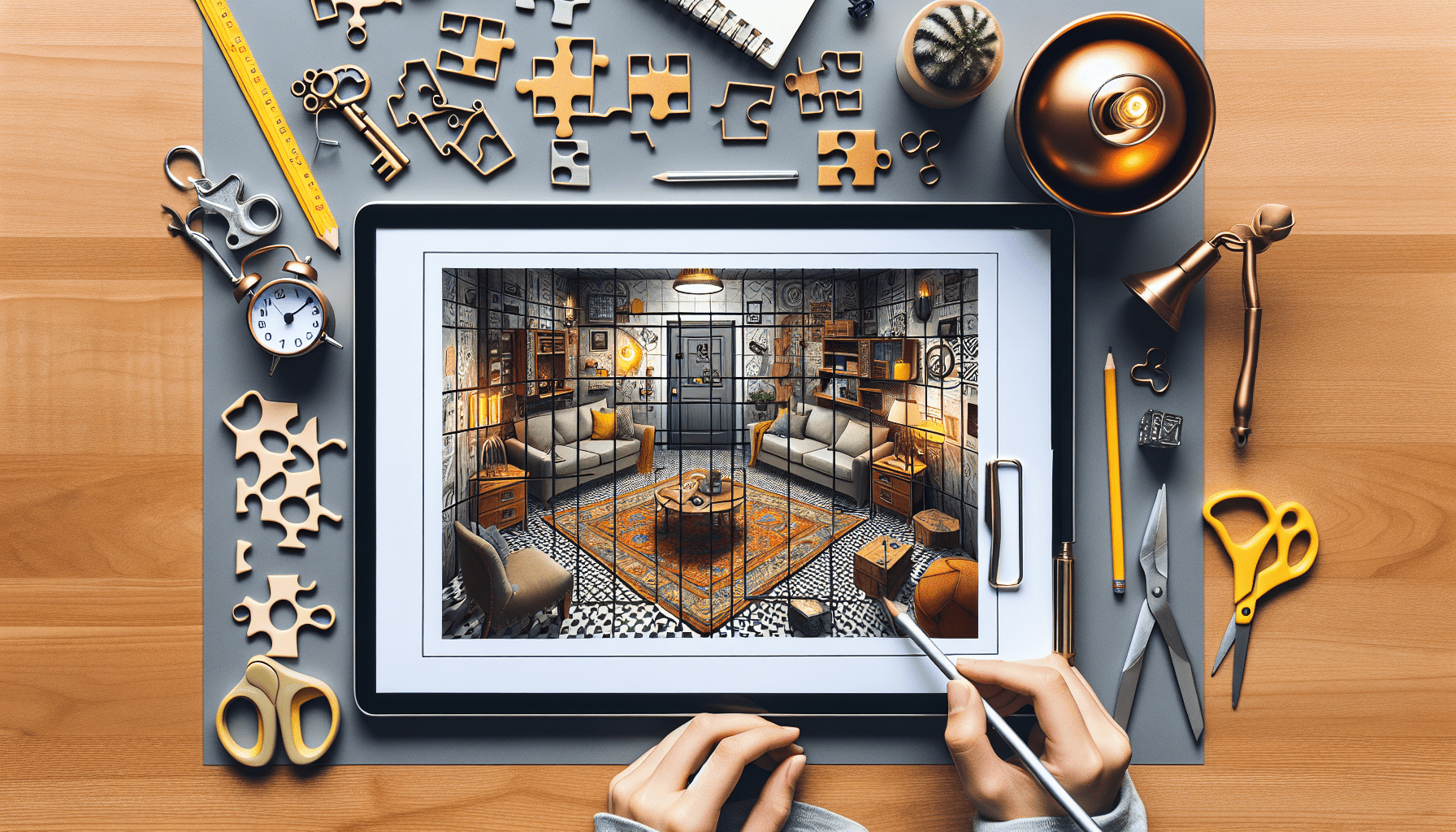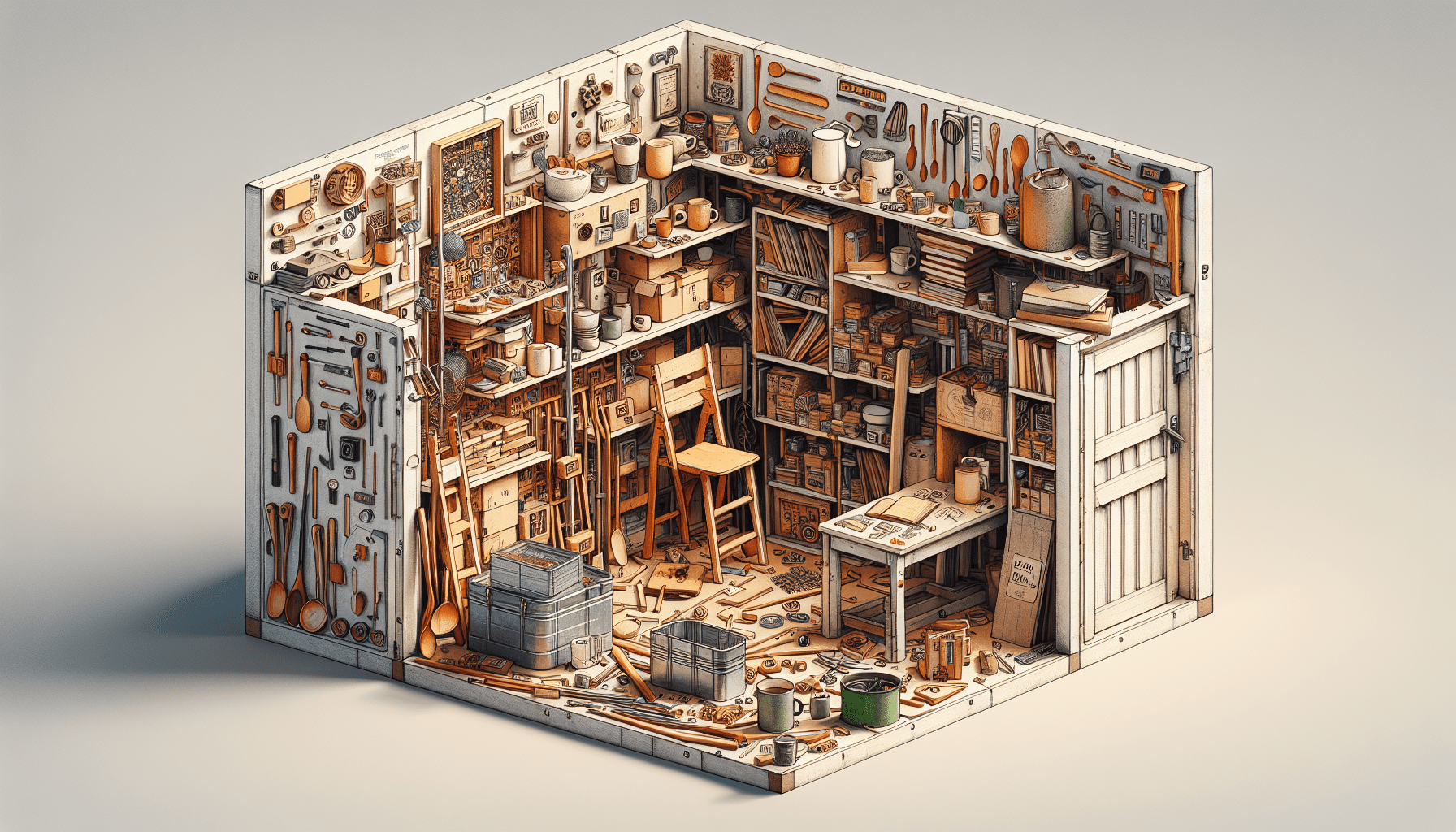Have you ever wanted to experience the thrill of an escape room without breaking the bank? Well, look no further because we’re here to show you how to create your very own escape room for free! If you’ve ever wondered how these intricate puzzles and mind-bending challenges are created, we’ve got you covered. With just a little bit of creativity and a dash of resourcefulness, you’ll be able to bring the excitement of an escape room right into your own home. So get ready to unlock the secrets, solve the riddles, and embark on a thrilling adventure all without spending a dime!

Choose a Theme
Select a Theme that Excites You
When creating your own escape room, the first step is to choose a theme that excites you. Think about the types of puzzles and challenges you enjoy and consider how they can be incorporated into a larger theme. Whether it’s a classic mystery, a thrilling adventure, or a fantasy realm, selecting a theme that you are passionate about will make the process of creating the escape room much more enjoyable.
Consider the Difficulty Level
Once you have chosen a theme, it’s important to consider the difficulty level of your escape room. Think about who your target audience is and tailor the puzzles accordingly. If you are designing the room for friends or family, you may want to make it slightly easier to ensure everyone can participate. On the other hand, if you are creating the escape room for a more experienced group, you can ramp up the difficulty level with complex puzzles and challenges.
Brainstorm Puzzle Ideas
With your theme and difficulty level in mind, it’s time to brainstorm puzzle ideas. Think about the different types of puzzles you can incorporate, such as riddles, logic puzzles, and physical challenges. Consider how these puzzles can be connected to the theme and integrated into the storyline. Get creative and explore unique ways to engage and challenge your participants. The key is to make the puzzles fun and rewarding, while still providing a satisfying level of challenge.
Find a Suitable Location
Utilize Your Home or Office
When it comes to finding a suitable location for your escape room, you don’t have to look much further than your own home or office. Utilizing a familiar space can make the experience more personal and convenient. Look for rooms that have enough space to accommodate the puzzle elements and provide enough privacy for the participants to fully immerse themselves in the game. Consider the layout of the room and how it can be optimized to create a seamless flow for the escape room experience.
Ask Friends or Family for a Space
If your own home or office is not suitable for an escape room, don’t worry! You can always ask friends or family members if they would be willing to lend you a space for your game. This could be a basement, garage, or even a spare room in their house. Make sure to communicate your needs and the space requirements, and be respectful of their space during the setup and gameplay. Collaborating with others can also bring fresh ideas and perspectives to your escape room design.
Gather Materials
Use Everyday Objects
Creating an escape room doesn’t have to break the bank. You can gather materials from everyday objects found around your home or office. Look for items that can be repurposed or transformed into puzzles or clues. For example, a combination lock from a suitcase can become an integral part of a puzzle, or a map of your neighborhood can be used to create a navigation challenge. Get creative and think outside the box when it comes to finding materials for your escape room.
Print Free Puzzle Templates Online
To add an extra layer of professionalism and polish to your escape room, take advantage of free puzzle templates available online. These templates can range from printable sheets with pre-designed puzzles to digital components that can be customized to fit your theme. Through a quick search, you can find a wide variety of templates that can save you time and effort in creating the puzzles yourself. Choose templates that align with your theme and modify them as needed to add a personal touch.
Create Custom Clues and Riddles
While utilizing ready-made puzzle templates can be convenient, don’t shy away from creating your own custom clues and riddles. This allows you to add a unique touch to your escape room and tailor the challenges to fit your theme and storyline. Craft intriguing riddles, create cryptic codes, and design clues that require participants to use their problem-solving skills. Personalizing the puzzles will make your escape room stand out and provide an unforgettable experience for your participants.
Design the Room Layout
Determine the Flow of the Game
Designing the room layout is crucial in creating a seamless and engaging escape room experience. Start by determining the flow of the game, from the entrance to the final solution. Consider the logical progression of puzzles and challenges and how they connect to one another. Think about the order in which participants will encounter each puzzle and ensure that there is a clear path for them to follow. Keep in mind that the flow should be intuitive and avoid any confusing or dead-end elements.
Create Different Areas with Clues and Puzzles
To add depth and variety to your escape room, create different areas within the room that house clues and puzzles. This can involve dividing the room into sections or designating specific objects or furniture as puzzle-solving stations. Each area should have its own set of challenges that contribute to the overall narrative and require participants to think outside the box. By creating distinct areas, you can create a sense of exploration and discovery, enhancing the immersive experience of the escape room.
Consider Safety and Accessibility
While designing the room layout, it’s essential to prioritize safety and accessibility. Ensure that all participants can move around comfortably, without any hazards or obstructions. Consider the placement of objects and clues to avoid tripping or knocking things over. Additionally, keep in mind any physical limitations or accessibility needs of the participants. Make adjustments and accommodations as necessary to ensure that everyone can fully enjoy the escape room experience.

Develop the Storyline
Create an Engaging Backstory
A compelling storyline is the backbone of a successful escape room. Develop an engaging backstory that immerses participants in the world of your theme. Think about the setting, the characters, and the overall narrative arc. Consider incorporating elements of mystery, suspense, or adventure to keep participants hooked from the beginning to the end. The backstory should provide context and motivation for the puzzles and challenges, making them feel like an integral part of the story.
Integrate Clues and Puzzles within the Narrative
To enhance the immersion and engagement of your escape room, integrate clues and puzzles seamlessly within the narrative. Avoid creating puzzles that feel detached or out of place. Instead, ensure that each challenge is tied to the story and moves the plot forward. For example, if the storyline involves solving a murder mystery, the puzzles could be related to gathering evidence or decoding secret messages. By blending puzzles with the narrative, you create a cohesive and captivating experience for the participants.
Design and Set up Puzzles
Create Physical and Mental Challenges
When designing the puzzles for your escape room, strive for a balance between physical and mental challenges. Incorporate puzzles that require participants to use their problem-solving skills, logic, and creativity. Additionally, consider including physical challenges that involve dexterity, coordination, or teamwork. The combination of different types of puzzles keeps the experience dynamic and engaging. Adapt the difficulty level of the puzzles based on your target audience and the overall flow of the game.
Incorporate Locks and Keys
Locks and keys are classic elements of escape rooms and can add an exciting layer of interaction to your game. You can incorporate various types of locks, such as combination locks, padlocks, or even electronic locks. Hide keys within the room and provide clues that lead participants to the correct locks. This will create a sense of accomplishment when participants successfully unlock a puzzle and progress through the game. The physical interaction with locks and keys adds a tactile element to the escape room experience.
Include Hidden Compartments and Secret Passages
To add an extra level of intrigue and discovery, consider including hidden compartments and secret passages within your escape room. These can be disguised as ordinary objects or furniture and can reveal additional clues or tools for solving puzzles. Think about using magnets, false bottoms, or sliding panels to create hidden compartments that participants must uncover through their observation and problem-solving skills. The inclusion of secret passages adds a touch of mystery and excitement to the overall experience.

Set the Atmosphere
Adjust Lighting and Sound Effects
Setting the right atmosphere is crucial in creating an immersive escape room experience. Adjust the lighting to create a mysterious and dramatic ambiance. Use dim or colored lighting to create shadows and highlight specific areas. Additionally, consider incorporating sound effects or ambient music that matches your theme. This can help to build tension, provide subtle hints, or create a sense of urgency. The combination of lighting and sound effects sets the mood and enhances the overall immersion of the escape room.
Add Decorations and Props
Decorations and props are essential in creating a visually appealing and authentic escape room. Pay attention to details and use props that align with your chosen theme. For example, if your escape room has a pirate theme, use props such as treasure chests, maps, or pirate flags. Consider the use of decorations to transform the space and make it feel like a different world. The visual elements contribute to the overall immersion and help participants feel fully engaged in the storyline.
Create an Engaging and Mysterious Ambiance
To create a memorable escape room experience, focus on creating an engaging and mysterious ambiance. Pay attention to the overall aesthetics and make sure that the room feels cohesive and atmospheric. Consider implementing thematic elements such as fog machines, hidden compartments, or strategically placed mirrors to enhance the sense of mystery. Every detail, from the lighting to the decorations, should contribute to the immersive atmosphere and make participants feel like they are part of an exciting adventure.
Test and Refine
Invite Friends to Playtest
Before inviting the public to experience your escape room, it’s important to test and refine the game. Invite a group of friends or family members to playtest the room and provide feedback. Observe how they interact with the puzzles and challenges, and pay attention to any areas that may need improvement in terms of difficulty, clarity, or flow. Their input can help you identify any potential issues and make necessary adjustments to ensure a smooth and enjoyable gameplay experience.
Gather Feedback and Make Necessary Adjustments
Use the feedback gathered from playtesting to refine your escape room further. Take note of any suggestions or criticisms and evaluate how they align with your initial vision for the game. Make necessary adjustments to the puzzles, clues, room layout, or overall difficulty level based on the feedback received. By iterating and refining the escape room through feedback, you can ensure that it provides the best possible experience for future participants.

Promote and Share
Invite People to Experience Your Escape Room
Once you are satisfied with the final version of your escape room, it’s time to invite people to experience it. Reach out to friends, family, colleagues, and local community groups to spread the word about your escape room. Offer to host sessions for small groups and encourage participants to bring their friends along. Providing a unique and enjoyable escape room experience can generate positive word-of-mouth and attract more participants to try out your game.
Use Social Media and Online Platforms to Spread the Word
In addition to personal invitations, leverage the power of social media and online platforms to promote your escape room. Create dedicated social media accounts and share captivating images, videos, and teasers of your escape room. Engage with potential participants by posting updates, sneak peeks, or behind-the-scenes content. Consider reaching out to local influencers or bloggers who may be interested in reviewing or featuring your escape room. By utilizing online platforms, you can increase the visibility and reach of your escape room to a wider audience.
Offer a Virtual Option
Create Online Versions of the Escape Room
In today’s digital age, offering a virtual option for your escape room can greatly expand your audience. Create online versions of your escape room that can be accessed remotely. Utilize platforms such as virtual meeting software or online collaboration tools to provide participants with a virtual escape room experience. Adapt your puzzles and challenges to fit the digital format, and consider incorporating interactive elements such as clickable buttons or virtual locks. Offering a virtual option allows participants from different locations to enjoy your escape room without the need for physical proximity.
Share Access Links with Participants
To offer the virtual option of your escape room, share access links or invitations with participants. This can be done through email, social media, or online forums. Provide clear instructions on how to access and participate in the virtual escape room. Consider setting up digital platforms where participants can interact with one another, ask for hints, or receive assistance during the gameplay. By making the virtual option easily accessible, you open up new possibilities for people to experience and enjoy your escape room at their convenience.
In conclusion, creating your own escape room can be a fun and rewarding experience. By selecting an exciting theme, finding a suitable location, gathering materials, designing the room layout, developing a compelling storyline, and setting the right atmosphere, you can create an immersive and engaging escape room experience. Through testing, refining, promoting, and offering a virtual option, you can share your escape room with others and provide them with an unforgettable adventure. So get started on your escape room journey and let your creativity run wild!
